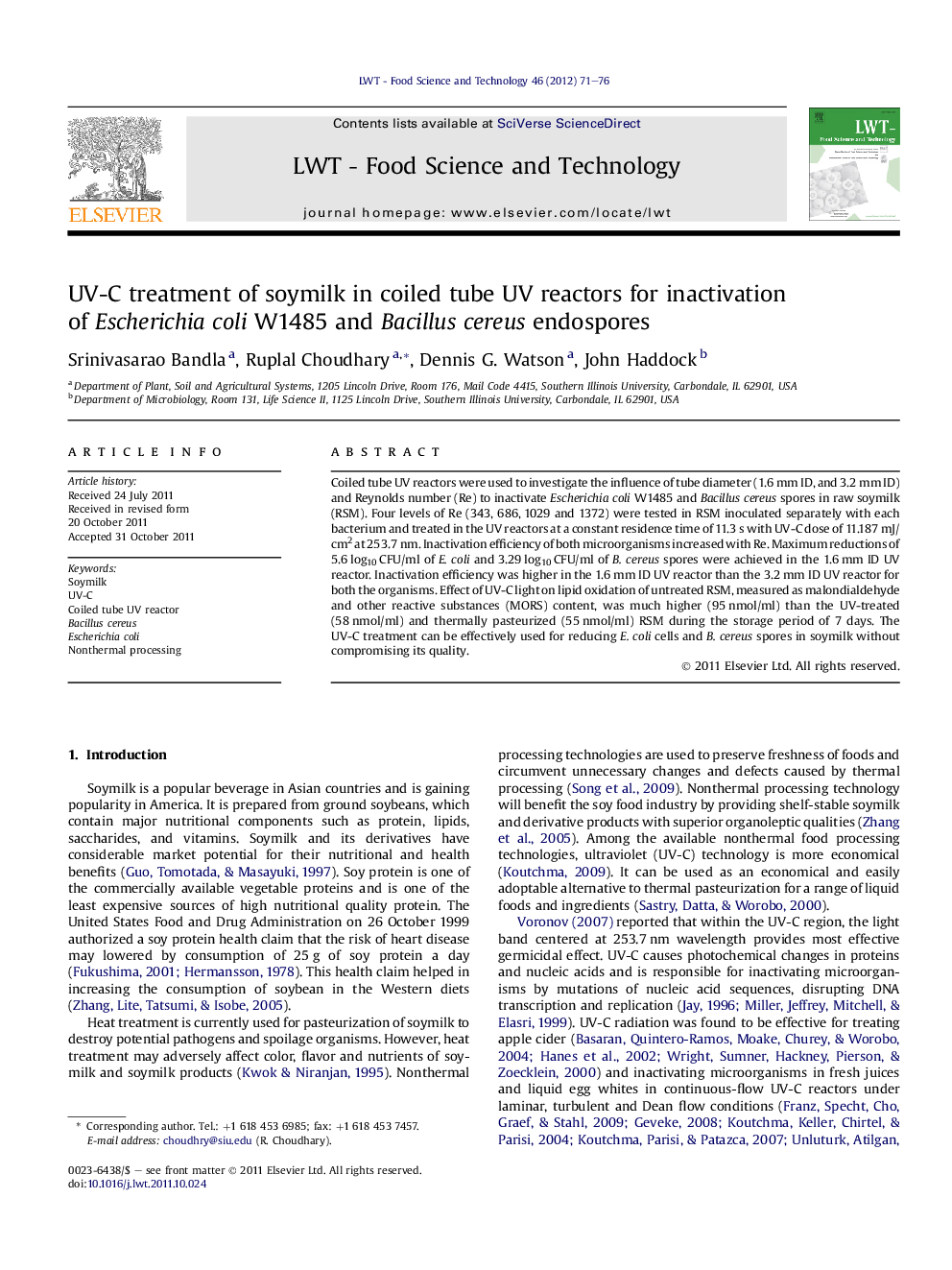| Article ID | Journal | Published Year | Pages | File Type |
|---|---|---|---|---|
| 6405350 | LWT - Food Science and Technology | 2012 | 6 Pages |
Coiled tube UV reactors were used to investigate the influence of tube diameter (1.6 mm ID, and 3.2 mm ID) and Reynolds number (Re) to inactivate Escherichia coli W1485 and Bacillus cereus spores in raw soymilk (RSM). Four levels of Re (343, 686, 1029 and 1372) were tested in RSM inoculated separately with each bacterium and treated in the UV reactors at a constant residence time of 11.3 s with UV-C dose of 11.187 mJ/cm2 at 253.7 nm. Inactivation efficiency of both microorganisms increased with Re. Maximum reductions of 5.6 log10 CFU/ml of E. coli and 3.29 log10 CFU/ml of B. cereus spores were achieved in the 1.6 mm ID UV reactor. Inactivation efficiency was higher in the 1.6 mm ID UV reactor than the 3.2 mm ID UV reactor for both the organisms. Effect of UV-C light on lipid oxidation of untreated RSM, measured as malondialdehyde and other reactive substances (MORS) content, was much higher (95 nmol/ml) than the UV-treated (58 nmol/ml) and thermally pasteurized (55 nmol/ml) RSM during the storage period of 7 days. The UV-C treatment can be effectively used for reducing E. coli cells and B. cereus spores in soymilk without compromising its quality.
⺠Inactivation of bacteria increased with Reynolds number of soymilk. ⺠Higher inactivation of bacteria and endospores in smaller diameter reactor. ⺠B. cereus endospores showed more resistant to UV dose than the E. coli W1485 cells in soymilk. ⺠It is possible to inactivate E. coli in soymilk by more than 5-log10 CFU/ml. ⺠Soymilk quality is not compromised by UV-C treatment of soymilk.
